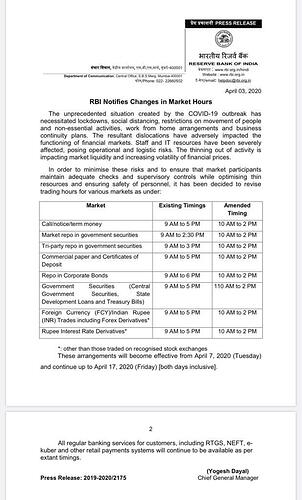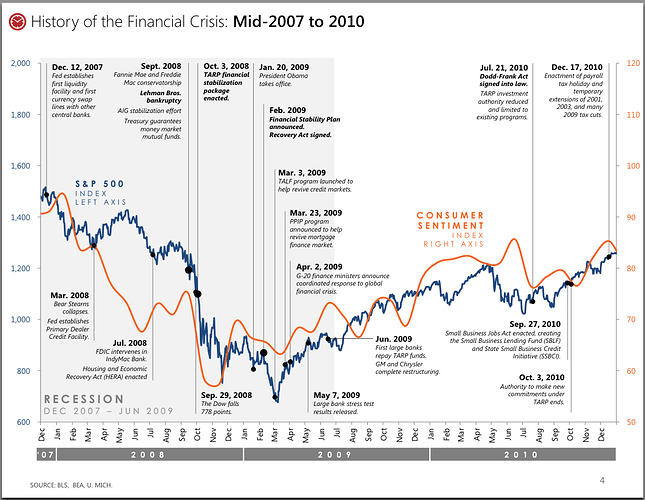Some context on why I find myself thinking a lot about about this…
Objective: Try to identify key events which can trigger market reactions and attempt to calibrate position taking accordingly. For all I know this may turn out to be a futile exercise, but I want to have the satisfaction that I gave it a good shot
Hypothesis - We are at a stage where the market is more worried about the 2nd and 3rd order economic impacts than about whether the virus eventually affects 40 lakh people or 2 Cr people
How do steep corrections hurt investor?
It is usually due to a sequence of steps and not due to the single factor
- Get caught in a correction which one was not able to anticipate (all big corrections work this way)
- Make the mistake of buying in too soon and not being prepared for events that can shake the markets much more before things get better
- Lose one’s nerve at the worst possible time and sell out before the inevitable bounce back, in the process miss participating in the bounce back and live with the scars
If one gets (2) wrong, there is higher likelihood of (3) occurring. Avoiding (2) is the easier part in my opinion, since (1) has already happened it is possible to think in terms of possible events and outcomes. One does not have this luxury till (1) actually happens since you cannot prepare for something that is not even known yet.
Examples from the past on how certain events have caused further market mayhem?
Source: Public media, chart from Timothy Geithner’s book
Source: US Treasury publication
It is very important to see the timeline of events and the market reaction to the same rather than just studying the trend of market fall.
From the above two charts one can see that the period August end to October mid is what broke the back of many investors. People who did not heed calls of prudence and reduce equity exposure (if already high) and kept buying for reasons of lower valuation were the ones who got hammered the most by the time the eventual bottom was made.
What happened during that 45 day period? - Lehman Brothers was allowed to fail which was unthinkable given that lot of troubled organizations were being bailed out
What kind of news can affect markets?
Type 1 - Continuous news
In the current context, number of new virus cases falls within this category. The market is not really going to bother about the specific numbers too much and will just focus on the broader trend.
Type 2 - Discrete Events
Examples being -
Will the clinical trails of Hydroxychloroquine/Avigan/Remdesivir work? Yes/No
Will the US go into a complete lock down or not? Yes/No
Will India come out of the lock down by end of April? Yes/No
Will Central Banks eventually bite the bullet and start buying equities as well? Yes/No
Once the discrete event plays out, it gets relegated to Type 1 since the news gets digested and the incremental value of the information goes down.
In my experience (whatever limited history I have read), sudden market movements are caused only by Type 2. There are some things which the market takes for granted which turn out to be wrong. Such events can hit during non crisis situations as well, for example the Brexit vote in July 2016, Trump coming to power in November 2016, China starting off a currency war in August 2015. Those were some of the most volatile market days in recent history
Fixed Income and currency markets pay a lot of importance to such events (which are known well in advance), these are all institutional markets with minimal retail participation unlike equity markets. Whether they get it right or wrong is not the point of discussion, they know very well that every time the central bank governor speaks there is wealth of information being telegraphed. The smarter investors already knew that the March 22 one day curfew was a sign of things to come.
Type 2 discrete events matter big time when markets are already nervous, the classical gyan and narrative in equity markets is to ignore such events and focus on things that can be estimated well. This advice holds true 99% of the time, I believe we are in that 1% of the time where it makes sense to focus on events and think about them pro-actively.
The worst case market scenario of the current health situation is that of so many people getting affected to such an extent that their entire lifestyle changes, they stop spending on discretionary things and just focus on survival. The lock down pretty much ensures that we are there in a proactive way before too many people get affected rather than doing so in a reactive manner. There will be an obvious economic cost to pay for this which policy makers as of today think is tolerable, the approach may change if the economic cost turns out to be much higher than envisaged.
Which is why when the lock down in India ends is a very important event. Every month of lock down shaves off 8.5% from the GDP, there obviously is a huge difference between 45 days of lock down and 4 months of lock down. Imagine the combined effect if India were to go into a 4 month lock down and the US announces a nation wide lock down too in the meanwhile.
Now how does this affect the buying decision? I am surely not doing something unique, every decent investor on this site is saying a variant of “wait for things to play out and don’t be in a hurry to buy”. Mind you they aren’t talking of nibbling once in a while, they are talking of serious buying. I am just trying to get deeper into the nuts and bolts of why that is and what events I would like to track before they start playing out.
More on this soon.



